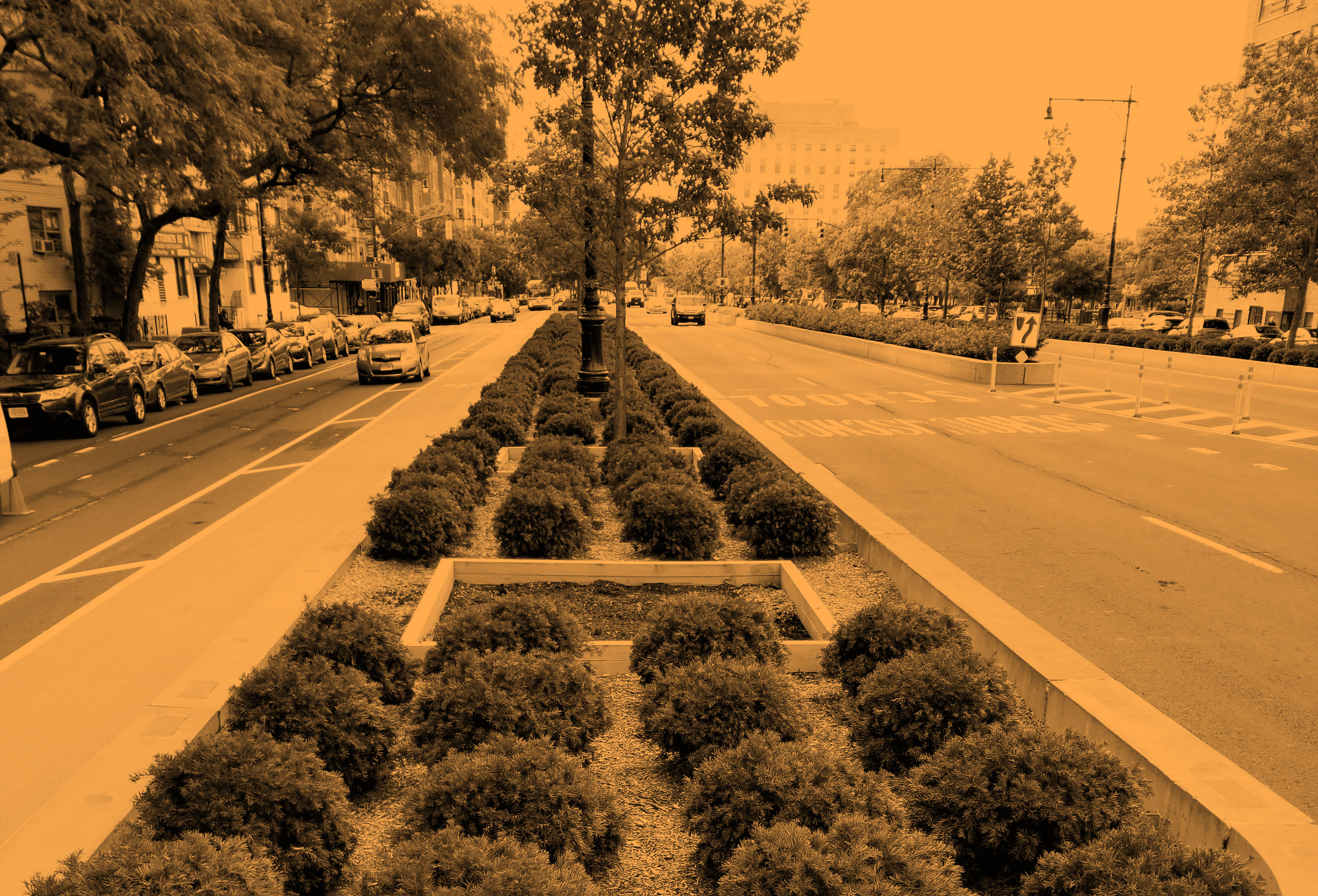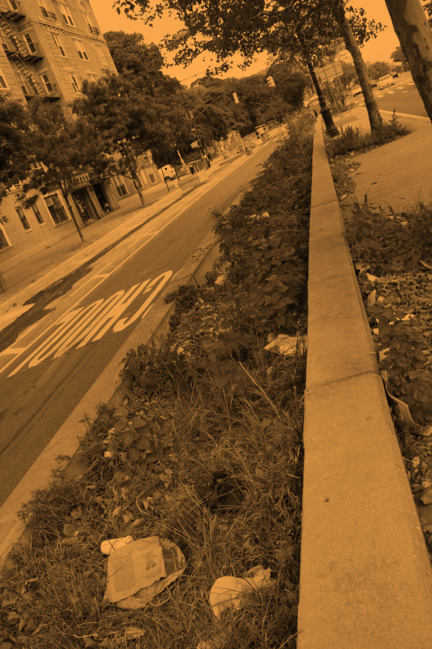
There is no one-size-fits-all approach to maintenance and no design is maintenance-free. New York City’s DOT is pursuing a multipronged approach to find long-term solutions for maintenance in all neighborhoods–not just those with resources.
By Nicholas Pettinati
The NYC Department of Transportation (DOT) constantly searches for new and creative ways to deliver services and projects to neighborhoods across the city. We are well equipped to make capital improvements and regularly try out new treatments, such as prototypes for furniture and lighting underneath elevated infrastructure through our citywide El-Space program.
 However, maintenance is a persistent challenge. DOT has established a number of design guidelines and standards that allow us to pursue more consistent designs, which make maintenance easier. Our Street Design Manual is the best distillation of these standards, and we have also developed more recent guidelines for elements such as planted raised medians. The guidelines are inclusive—from the types of soil and plants, to the type of irrigation, to the inclusion of other amenities like benches and lighting. All of these features allow for adjustment depending on the level of maintenance that can be provided. Following are four approaches that help facilitate maintenance:
However, maintenance is a persistent challenge. DOT has established a number of design guidelines and standards that allow us to pursue more consistent designs, which make maintenance easier. Our Street Design Manual is the best distillation of these standards, and we have also developed more recent guidelines for elements such as planted raised medians. The guidelines are inclusive—from the types of soil and plants, to the type of irrigation, to the inclusion of other amenities like benches and lighting. All of these features allow for adjustment depending on the level of maintenance that can be provided. Following are four approaches that help facilitate maintenance:
City Maintenance
Based on a set of criteria, the City devotes funding to maintain certain elements and create “beautiful and well-tended streets” as per the Mayor’s OneNYC plan. DOT will seek out maintenance partners like Business Improvement Districts or merchants associations where possible. Having civic groups that are invested in neighborhoods leads to better ownership of both their design and maintenance. However, in areas that lack partnerships, DOT has created a program to care for landscaped medians, in order to provide the safety, environmental and aesthetic benefits these designs offer.
“Adopt-A-…” Program
Based on its successful Adopt-A-Highway program, DOT is developing an option for local business groups to “adopt” portions of planted medians throughout the City. The group or business pays into a fund that will be used for maintenance. In return, a sign acknowledging the contribution will be installed in or near the median.
Sponsorship
DOT finds partners that provide financial support for a project or maintain an area. The partnering company’s logo is permitted on what is being sponsored. DOT is using this strategy to install and maintain a new under-elevated seating and lighting structure, the CityEl.
Concessions
DOT permits commercial entities to generate profit from structures installed within the right-of-way. In exchange, the concessionaire has to maintain the area and deliver revenue above an agreed amount to the City. DOT can use these funds to maintain public spaces that may not support a concession. DOT is also studying options where multiple sites are offered to a concessionaire, pairing high-revenue sites with locations in underserved areas that would benefit from activation and maintenance, but would be less attractive if offered separately.
The above approaches all have challenges and DOT will explore and continue to add new, innovative strategies. Finding these maintenance solutions will unlock DOT’s ability to provide greener streets and public spaces in all neighborhoods, contributing to creating healthier communities long-term.
–